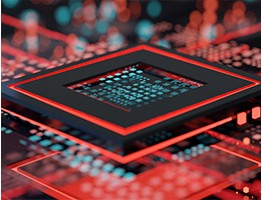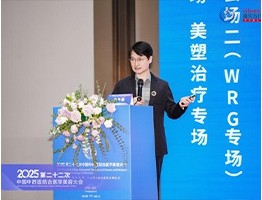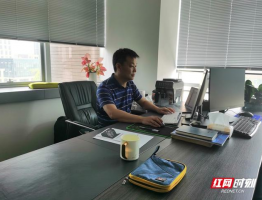Quantum Physics: New Breakthrough – First Identification of Three-Photon W-State Entanglement
source:Reference News Website
keywords:
Time:2025-10-14
Source: Reference News Website 18th Sep 2025
Reference News Website Reported on September 16.
According to a report by Spain's Muy Interesante monthly website on September 14, when Einstein confronted the mysteries of quantum mechanics, he made no attempt to hide his confusion. He referred to the phenomenon of entanglement as "spooky action at a distance" and questioned whether this phenomenon could fully describe reality. Today, this concept that once puzzled the most famous physicist of the 20th century has once again become the core of a groundbreaking experiment—one that expands the boundaries of the application of light and information: for the first time, the research team successfully identified the special entangled state between three photons in a single step.
This milestone not only carries theoretical significance but also lays the groundwork for more powerful quantum technologies, such as quantum teleportation or measurement-based computing. This groundbreaking achievement, accomplished by research teams from Kyoto University and Hiroshima University, was published in the U.S. journal Science Advances. It proposes a quantum measurement method capable of detecting the W-state—a complex multi-particle entangled state—with measurement precision exceeding the threshold required to confirm the properties of quantum entanglement.
In quantum mechanics, entanglement is a deep-seated correlation between particles that links them together, rendering their individual properties meaningless when separated. When more than two particles are involved, different forms of entanglement can emerge. The most well-known of these is the GHZ state, which has already been verified in experiments. Another state—the W-state—is more resistant to information loss but far harder to detect.
A W-state composed of three qubits (such as the three photons used in this experiment) can be understood as a system where exactly one particle possesses a specific property (e.g., vertical polarization), while the other two share a different property (e.g., horizontal polarization). Despite its apparent simplicity, this type of quantum state exhibits a unique mathematical structure: it demonstrates cyclic permutation symmetry, meaning swapping the order of the photons does not alter the essence of the quantum state.
The W-state is of great importance for cutting-edge applications such as multi-user quantum teleportation and certain distributed quantum computing schemes. However, direct measurement capable of clearly identifying this state had not been achieved until now.
While the W-state is the core of this latest Japan-led experimental breakthrough, it also bears a little-known Spanish imprint. This specific form of quantum entanglement was first formulated in 2000 by three scientists, including Spanish theoretical physicist Ignacio Cirac. Their research, published in the U.S. journal Physical Review A, demonstrated that "three qubits can be entangled in two distinct ways." One form was the then-known GHZ state; the other, a completely new state, was named the W-state.
A key advantage of the W-state is that, unlike the GHZ state, it is not completely destroyed if one qubit is lost. Instead, the remaining qubits retain their entangled state. This damage-resistant property makes it an ideal candidate for practical applications such as distributed computing or secure quantum communication—fields where particle loss is inevitable.
Detecting quantum entanglement significantly broadens the potential of quantum computing and communication. In measurement-based quantum computing, for example, information processing is achieved by measuring entangled states rather than using traditional logic gates. Having a detector capable of identifying the three-particle W-state will simplify many protocols.
In the field of quantum networks, the ability to perform "entanglement swapping" depends critically on the capacity to conduct such complex measurements. The authors of the experiment note that their result "opens the door to the development of new protocols for quantum networks between multi-party systems."
Notably, the authors emphasize that the method is scalable—it can be extended to more than three particles—a feature crucial for building multi-node quantum networks or universal quantum computers.
Despite the experiment’s success, there is still room for improvement. The discrepancy between the ideal results and observed outcomes is partly attributed to factors such as the simultaneous emission of multiple photon pairs, laser pulse triggering noise, and minor differences between individual photons—all of which may affect the final precision of the results.
The research team is working to extend this method to multi-photon systems and miniaturize the system using integrated photonic circuits to advance practical applications. In fact, one of their explicit goals is to drive the development of quantum chips, incorporating such measurement technologies into their infrastructure.
This experiment also marks a turning point in experimental quantum physics—not only because it enables the verification of a state that was previously inaccessible, but more importantly, because it proves that the technologies required for the precise and reliable manipulation of quantum information are no longer an unattainable dream.
 Global LiDAR Giants Engage in Escalating Patent Wars
Global LiDAR Giants Engage in Escalating Patent Wars From Cambridge to Haining, he made China's lasers light up the world for the first time
From Cambridge to Haining, he made China's lasers light up the world for the first time 4 in 5 days! These laser "mega-projects" successively put into operation or capped
4 in 5 days! These laser "mega-projects" successively put into operation or capped Analysis of Global Optical Communication Chip Market: Tiered Competition & Chinese Rise
Analysis of Global Optical Communication Chip Market: Tiered Competition & Chinese Rise "Laser Power" Shines at the Shanghai International Industry Fair
"Laser Power" Shines at the Shanghai International Industry Fair
 Zhuojie Laser: Breaking barriers via tech breakthroughs, aiming to lead high-end light sources
Zhuojie Laser: Breaking barriers via tech breakthroughs, aiming to lead high-end light sources Dr. Sun Linchao: Pioneer and Leader in China's Field of Medical Aesthetic Laser Therapy
Dr. Sun Linchao: Pioneer and Leader in China's Field of Medical Aesthetic Laser Therapy Guo Guangcan, CAS Academician & USTC Professor: Four Decades Chasing Quantum "Light"
Guo Guangcan, CAS Academician & USTC Professor: Four Decades Chasing Quantum "Light" Ma Renmin: A Peking University Physicist Striving to Break Through the Boundaries of Nanolasers
Ma Renmin: A Peking University Physicist Striving to Break Through the Boundaries of Nanolasers Lu Guangfeng: Retired but Not Faded, 20-Year Dedication to Laser Gyroscope R&D
more>>
Lu Guangfeng: Retired but Not Faded, 20-Year Dedication to Laser Gyroscope R&D
more>>










